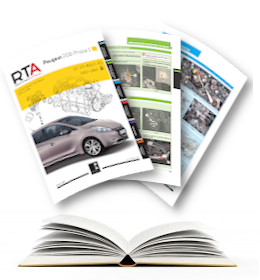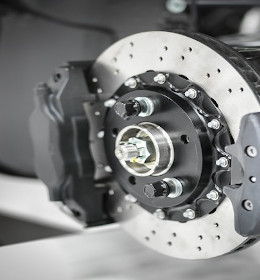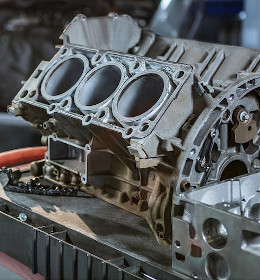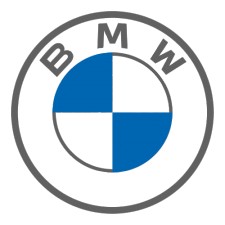Que signifie votre code Code Défaut CITROEN ?
Grace au système OBD, les
Citroen
fabriqués après 1996 sont normalement équipés d'une prise diagnostique OBD.
Si l'ordinateur de la voiture rencontre un problème,un code d'erreur ou un code de diagnostic (DTC)
sera stocké dans la mémoire de l'ECU de la voiture.
Avec un lecteur OBD branché sur le port OBD (On-Board Diagnostics) de la voiture, vous pouvez lire la liste des codes stockés, et donc découvrir quel est le problème.
Les codes suivent une formule permettant de savoir généralement quel est le problème avant même de regarder le tableau ci-dessous.
Nous vous présentons ci-dessus une liste très complète des différents codes défauts possibles.
Si le code défaut de votre auto s'affiche au tableau de bord, vous n'aurez peut-être même pas besoin d'un lecteur OBD . il sera dans la liste .
Réparer le code défaut de votre auto, c'est potentiellement simple à faire avec vos revues et méthodes techniques.

Réparer le code défaut de votre auto, c’est potentiellement simple à faire avec nos revues et méthodes techniques
| Code | Libellé |
|---|---|
| P16B5 | Drive train : Starter motor piloting fault |
| P16BA | Starter control interface unit : Short-circuit to the battery plus |
| P16BB | Starter control interface unit : Short circuit to earth or open circuit |
| P16CF | Reversible alternator : Reversible alternator brushes wear fault |
| P16D2 | Control of the motorised coolant outlet housing : Overheating or excess current |
| P16D6 | Deterioration of the engine oil : Carbon content of the engine oil excessive |
| P16D8 | Starter control interface unit : Electrical fault on the control |
| P16D9 | Controlled engine starting and stopping : Motor jammed |
| P16E4 | Vehicle speed limiter : Vehicle speed incorrect |
| P16E5 | Cruise control : Vehicle speed incorrect |
| P16E6 | Engine management ECU : ECU shutdown phase (power latch) not performed or not finished |
| P16E8 | Particle filter differential pressure : Detection of an inversion of the pressure take-offs |
| P16E9 | Combustion of the cylinders : Acyclism correction too great or insufficient |
| P16EC | Control of the inverter power transistors : Supply voltage fault |
| P16ED | Control of the high pressure fuel flow regulator : Application of an electrical current which is not plausible |
| P16EE | Control of the high pressure fuel flow regulator : Application of an electrical current which is too high |
| P1700 | Transmission failed to engage neutral (N) |
| P1702 | Transmission range sensor 1 circuit intermittent |
| P1703 | Fault in the accelerator pedal position information sent by the engine ECU : Value received incorrect |
| P1703 | Brake switch out of self-test range |
| P1704 | Fault with the CAN information from the secondary brake pedal switch : Invalid value |
| P1706 | High vehicle speed observed in park (P) |
| P1707 | Gearbox neutral (N) indicator fault |
| P1708 | Clutch pedal switch 1 circuit/open |
| P1709 | CAN 250 : Gear lever signal fault : Short circuit to positive (CAN 500) : Gear lever signal fault : Short circuit to positive or open circuit |
| P1709 | Park/neutral position switch out of self-test range |
| P1711 | Clutch pedal switch signal fault : Inconsistent with the position of the accelerator pedal |
| P1711 | Transmission fluid temperature (TFT) sensor out of self-test range |
| P1712 | Clutch actuator position signal fault : Coherence |
| P1712 | Transmission torque reduction request signal |
| P1713 | Clutch actuator position signal fault : Short circuit to earth |
| P1713 | Transmission fluid temperature (TFT) sensor in range, low value |
| P1714 | Gear-shift solenoid 1, inductive signature malfunction |
| P1715 | Gear-shift solenoid 2, inductive signature malfunction |
| P1716 | Gear-shift solenoid 3, inductive signature malfunction |
| P1717 | Gear-shift solenoid 4, inductive signature malfunction |
| P1718 | Transmission fluid temperature (TFT) sensor in range, high value |
| P1720 | Vehicle speed sensor 1 circuit/open |
| P1721 | Incorrect first gear ratio |
| P1722 | Incorrect second gear ratio |
| P1723 | Automatic gearbox output engine speed, no signal |
| P1723 | Incorrect third gear ratio |
| P1724 | Incorrect fourth gear ratio |
| P1727 | CAN communication : Torque requested by ESP is incoherent |
| P1728 | CAN-Bus no communication with the transmission control unit |
| P1729 | 4WD low-gear ratio switch fault |
| P1730 | Gear control malfunction - second, third, fifth gear |
| P1731 | Gear-shift malfunction, 1-2 |
| P1732 | Fault on the gear lever position sensor : No signal |
| P1732 | Transmission fluid pressure control solenoid, 2-3 shift |
| P1733 | Transmission fluid pressure control solenoid, 3-4 shift |
| P1734 | Gear control malfunction |
| P1735 | First gear switch circuit/open |
| P1737 | Fault on the gear lever position sensor : Value received incorrect |
| P1738 | Gear-shift time fault |
| P1740 | Torque converter solenoid, inductive signature malfunction |
| P1741 | Torque converter solenoid, control fault |
| P1742 | Torque converter solenoid, failed on |
| P1743 | Torque converter solenoid, failed on |
| P1746 | Pressure control solenoid 1 circuit/open |
| P1748 | Evaporative purge control |
| P1748 | Exchanger management solenoid valve output fault : Open circuit or short circuit to positive |
| P1749 | Gear engagement actuator fault : Position incorrect in relation to the requirement : Coherence |
| P1750 | Steering wheel control information fault : Steering wheel controls jammed |
| P1751 | Gear-shift solenoid 1 control circuit range/performance |
| P1751 | Steering wheel control information fault : Not characterised |
| P1753 | Steering wheel control information fault : Open circuit or short circuit to positive |
| P1755 | Intermediate speed sensor (ISS) |
| P1756 | Gear-shift solenoid 2 control circuit range/performance |
| P1756 | Clutch actuator motor signal fault : Short circuit to earth or to positive |
| P1761 | Gear engagement actuator motor signal fault : Open circuit |
| P1761 | Gear-shift solenoid 3 control circuit range/performance |
| P1763 | Air conditioning or Key-lock control fault : Open circuit or short circuit to positive |
| P1764 | Gear selection electrovalve output fault : Short circuit to earth |
| P1765 | Gear selection electrovalve output fault : Short circuit to positive |
| P1765 | Timing solenoid circuit/open |
| P1766 | Gear selection electrovalve output fault : Open circuit |
| P1767 | Gear selection fault : Not characterised |
| P1767 | Torque converter solenoid circuit/open |
| P1769 | Transmission torque modulation fault |
| P1770 | Clutch solenoid circuit/open |
| P1772 | Gear selection electrovalve output fault : Open circuit or short circuit to positive |
| P1775 | Transmission system malfunction indicator light (MIL) fault |
| P1778 | Transmission reverse (I/P transducer) circuit/open |
| P1780 | Neutral position : Coherence |
| P1781 | 4WD switch out of self-test range |
| P1783 | Transmission overheat |
| P1785 | Transmission mechanical failure in first and second gear |
| P1786 | Gear-shift malfunction, 3-2 |
| P1787 | Gear-shift malfunction, 2-1 |
| P1790 | Throttle position sensor, mechanical fault |
| P1791 | Throttle position sensor, electrical fault |
| P1792 | Barometric pressure sensor circuit/open |
| P1793 | Inlet air volume circuit/open |
| P1794 | Battery voltage circuit/open |
| P1795 | Idle switch circuit/open |
| P1796 | Kickdown switch circuit/open |
| P1797 | Neutral switch circuit/open |
| P1798 | Coolant temperature sensor 1 circuit/open |
| P1799 | Hold switch circuit/open |
DEFINISSEZ VOTRE MARQUE POUR ACCEDER A VOS CODES DEFAUTS
-
Revue technique RTA

Revue Technique Automobile
La revue technique de référence depuis 1946. La RTA est une revue papier pour tous publics, qui vous permet d'effectuer les petites et les grosses réparations
 Voir le descriptif
Voir le descriptif
-
Entretien courant MTA

Méthode Technique Automobile
La MTA est issue de nos outils destinés aux pros de l'auto. Ces méthodes en ligne permettent d'effectuer les opérations de maintenances de votre auto (filtres, courroies, etc.)
 Voir le descriptif
Voir le descriptif
-
Toutes réparations MTAx

Méthode Technique Automobile Expert
La MTA expert est un outil en ligne destiné aux experts en mécanique et en carrosserie, pour effectuer tous types de réparations sur une voiture.
 Voir le descriptif
Voir le descriptif















